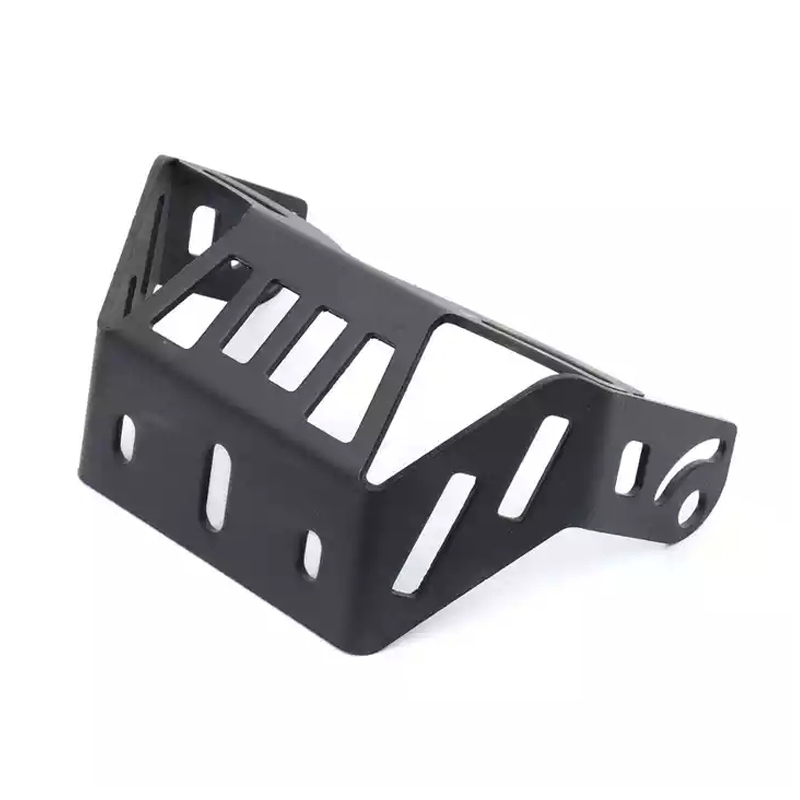An in-depth analysis of the stamping process, worth learning and collecting!
Cars have been called "the machine that changed the world." Because the automobile industry has strong industrial correlation, it is regarded as an important symbol of a country's economic development level. There are four major automobile processes. The stamping process is the top priority and the first of the four major processes.
1. Concept:
1. Stamping concept

Stamping is a forming processing method that relies on presses and molds to apply external force to plates, strips, pipes and profiles to cause plastic deformation or separation, thereby obtaining workpieces (stamping parts) of the required shape and size. Stamping and forging both belong to plastic processing (or pressure processing), and are collectively called forging. The blanks for stamping are mainly hot-rolled and cold-rolled steel plates and strips. 60 to 70% of the world's steel products are plates, most of which are stamped into finished products.
The body, chassis, fuel tank, radiator fins of automobiles, boiler drums, container casings, iron core silicon steel sheets of motors and electrical appliances, etc. are all stamped. There are also a large number of stamped parts in products such as instruments and meters, household appliances, bicycles, office machinery, and living utensils.
2. Stamping process characteristics
A. Stamping is a processing method with high production efficiency and low material consumption. The stamping process is suitable for the production of larger batches of parts and products, facilitates mechanization and automation, and has high production efficiency. At the same time, stamping production can not only strive to achieve less waste and no waste production, but also even if there are edges in some cases The leftover materials can also be fully utilized.
B. The operation process is convenient and does not require the operator to have a high level of skills.
C. Stamped parts generally do not require mechanical processing and have high dimensional accuracy.
D. Stamping parts have good interchangeability. Stamping processing stability is good, the same batch of stamping parts. Can be used interchangeably without affecting assembly and product performance.
E. Since stamping parts are made of sheet metal, their surface quality is good, which provides convenient conditions for subsequent surface treatment processes (such as electroplating and spray painting).
F. Stamping processing can obtain parts with high strength, high rigidity and light weight.
G. The cost of stamping parts produced in batches with molds is low.
H. Stamping can produce parts with complex shapes that are difficult to process with other metal processing methods.
3. Introduction to stamping process
Mechanical steering uses the driver's physical strength as the source of steering power, and all mechanical transmission structures are mechanical. The mechanical steering system consists of three major parts: steering control mechanism, steering gear and steering transmission mechanism.
A. Separation process:
The sheet metal is separated along a certain contour line under the action of external force to obtain finished products and semi-finished products with a certain shape, size and cut surface quality. Separation condition: The stress inside the deformed material exceeds the strength limit σb.
a. Blanking
Use a die to punch along a closed curve, and the punched part is the part. Used to manufacture flat parts of various shapes.
b. punching
Use a die to punch along a closed curve, and the punched part is scrap. There are several forms such as front punching, side punching, and hanging punching.
c. Trimming
Trim the edges of formed parts neatly or cut them into a certain shape.
d. Separation
Separation is produced by punching along an unclosed curve with a die.
When the left and right parts are formed together, the separation process is often used.
B. Forming process:
The blank undergoes plastic deformation without breaking to obtain finished products and semi-finished products of a certain shape and size.
Forming conditions: Yield strength σS < material internal stress < strength limit σb.
a. Stretch
Forming sheet blanks into various open hollow parts.
b. Flange
The edge of the sheet or semi-finished product is formed into an upright edge with a certain curvature along a certain curve.
c. Plastic surgery
A forming method used to improve the dimensional accuracy of formed parts or obtain a small corner radius.
d. Turn holes
Upright edges are produced on pre-punched sheets or semi-finished products or on unpunched sheets.
e. bend
By bending sheet metal into various shapes along straight lines, parts with extremely complex shapes can be processed.
4. Stamping process flow chart
2: Stamping mold:
Molds are known in Japan as "the driving force for entering a wealthy society" and in Germany as "the emperor of the metal processing industry". The level of mold design and manufacturing technology is one of the important indicators of a country's product manufacturing level.
A. Mold classification
According to the working principle, it can be divided into:
B. Basic structure of mold
The punching die usually consists of upper and lower dies (convex and concave dies).
Composition: 1 working part, 2 guide, 3 positioning, 4 limit, 5 elastic element, 6 lifting and turning
Three: Stamping equipment:
1. Press
A. According to the bed structure, presses can be divided into two types: open presses and closed presses.
Open presses are open on three sides and have a C-shaped bed with poor rigidity. They are generally used in small presses;
Closed presses have open front and rear sides, a closed bed, and good rigidity. They are generally used in large and medium-sized presses.
B. According to the type of driving slide force, presses can be divided into: mechanical presses and hydraulic presses
2. Unwinding line
3. Shearing machine
The shearing machine is mainly used to cut the straight edges of metal sheets of various sizes.
The transmission forms are mechanical and hydraulic.

